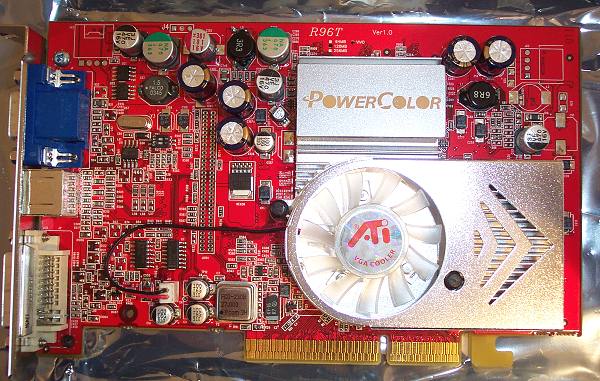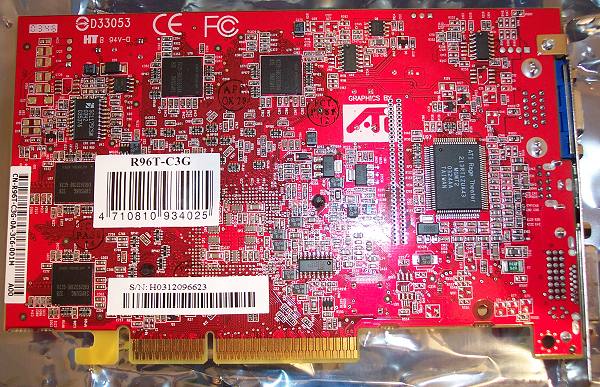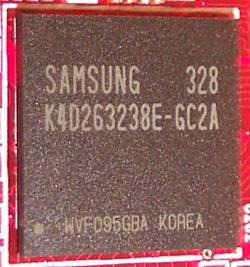Card appearance
ATI has done a good job in positioning the 9600XT. The PCB space is minimal, its power requirements are low, and it can get away with using a small GPU cooler. ASUS' 9600XT was a case in point. Let's see how PowerColor approaches design.
The PowerColor version is a deceptively small card. Remember that it's built on a 0.13-micron process that, with a few other core tweaks, allows ATI to offer its partners GPUs guaranteed to an impressive 500MHz core speed. Our testing has shown that 9600XTs have a propensity to reach near-600MHz speeds with little or no extra cooling. The fan runs quieter than ASUS' 9600XT, too.

The shiny aluminium cooler extends over the GPU and front-mounted RAM modules. Note the lack of auxillary power here. That's another benefit of using a refined manufacturing process. Compare this with, say, the GeForce FX 5700 Ultra video card. That takes up considerably more PCB space and requires external PSU-driven power via a molex connector. It's interesting how most Add-In Board (AIB) partners choose to run with the reference Radeon 9800XT design but opt for individual cooling and construction on their 9600-based boards.

ATI's Radeon cards have always had excellent DVI quality, arguably better than NVIDIA's TMDS transmitter's. The PowerColor's extends to 1600x1200; perfect for big-screen TFT fun. We'd normally gloss over the S-Video connection as a simple carrier for the TV-Out signal. PowerColor follows in ASUS' mould and adds ATI's cut-down Rage Theater ASIC, which a maximum supported resolution of 800x600. That, then, makes this 9600XT into a mini All-In-Wonder card, but it's bereft of its tuning and composite input abilities. The good ol' HD15 connection sits to the left. A dual-DVI model would be nice.

TinyBGA memory from Samsung and the ancient Rage Theater ASIC mark out the back of the card. Our test notes highlighted PowerColor's plans to add in an LM63 temperature monitoring chip. As ATI's overclocking utility, OVERDRIVE, is contingent upon onboard monitoring, retail examples of the Bravo card will feature this automatic overclocking tool which boosts the core speed from the default 500MHz to 520MHz. Our sample arrived without the LM63 chip in place, so OVERDRIVE was disabled through the card's BIOS. The user is still free to use third-party overclocking software.

A total of 128MBytes of Samsung TinyBGA memory that's rated to 700MHz. ASUS' card used the same quality of Samsung RAM but then, inexplicably, chose to run it at 600MHz. We'll see that PowerColor is less conservative in its approach. The nominal 700MHz sounds impressive on a card that'll retail at around the £125 mark. The user needs to remember that the 9600XT uses an 128-bit wide memory bus that provides around 11GB/s of theoretical bandwidth.

Old faithful. It's been around the block a few times now. ATI's literature first makes reference to it in 1998 - an age in computing terms. The basic Rage Theater chip crops up quite regularly in AIB partners' video cards. We suppose its low cost and ease of integration make it a natural choice for partners who wish to add perceived value to their products. VIVO, for the most part, is nothing more than a novelty.









